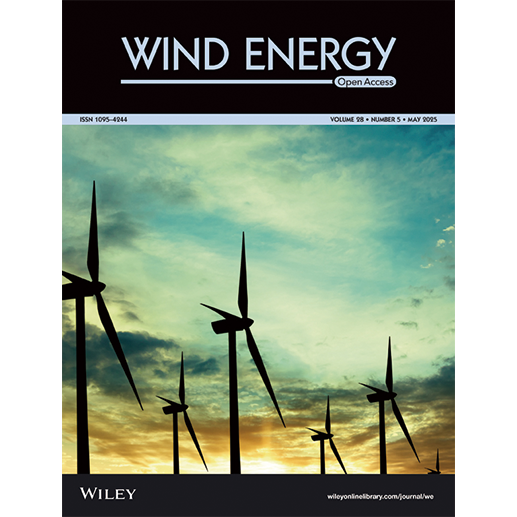Keywords
Wind turbine blade, Modal analysis, Debonding, Machine learning, Optimization
.jpg)
Abstract
The structural stiffness of a blade changes when it is defective, which affects its modal parameters. Consequently, modal parameters can be crucial to investigating defects.
Therefore, developing a model that can accurately analyze the modal parameters of healthy and defective blades is essential.
This study proposes a high-fidelity finite element (FE) model development method based on multiobjective optimization.
Three 10-kW-class wind turbine blades were manufactured, and the modal parameter changes due to debonding damage were measured.
The initial FE model was constructed using structural drawings and considering specific material properties.
Subsequently, the modal analysis results were compared with the experimental results.
The analysis errors of normal and abnormal blades were expressed as cost functions and multiobjective optimization was performed.
Machine learning–based predictive models facilitated time- and cost-effective optimization, enabling modal updating that simultaneously reflects modal parameter changes for various blade models.
Because accurately predicting the dynamic characteristics of blades by various defect locations and sizes is crucial for blade damage detection, the proposed method is significant for damage detection research.
초록 (번역)
풍력발전기 블레이드는 결함이 발생하거나 파손될 경우 큰 사고와 비용을 초래할 수 있어 블레이드의 상태를 진단하고 결함을 검출하는 Structural Health Monitoring(SHM) 기술의 중요성이 점차 증가하고 있다.
특히, 블레이드에 디본딩 결함이 발생하는 경우, 구조적 강성이 변하게 되어 고유진동수(natural frequency), 모드 형상(mode shape)에 영향을 미치므로 이런 modal parameter는 블레이드 결함 검출을 위한 중요 인자로 활용될 수있다.
이를 위해서는 정상 블레이드 뿐만 아니라 다양한 결함이 발생한 블레이드의 modal parameter를 함께 정확히 해석할 수 있는 FE model이 필수적이며, 이에 본 연구는 다목적 최적화에 기반한 High-fidelity FE model 개발 방법을 제안한다.
실제 10kW급 블레이드를 제작하고, 결함에 따른 modal parameter 변화를 실험을 통해 측정 및 분석하였다.
또한, 블레이드 구조 도면과 재료 물성치를 활용하여 초기 FE model을 구성하고 modal analysis 결과와 실험 결과를 비교하였으며, 특히 고차 모드에서 해석 오차가 크게 발생함을 확인하였다.
이를 극복하고 FE model의 modal analysis 정확도 향상을 위해 본 연구에서는 정상과 비정상 블레이드의 modal parameter 해석 오차를 cost function으로 구성하고 다목적 최적화를 수행하였다.
이 과정에서 ML기반의 predictive model을 활용함으로써 time and cost effective optimization이 가능하였고, 실제 실험결과를 바탕으로 주요 target 모드를 설정하고 target mode의 modal parameter 오차의 가중치 역시 최적화함으로써 다양한 블레이드 모델에 대한 고유진동수와 모드형상 변화를 동시에 잘 반영하는 modal updating이 가능하였다.
#
Turbomachinery, Industrial Equipment, Predictive Modeling, Energy








